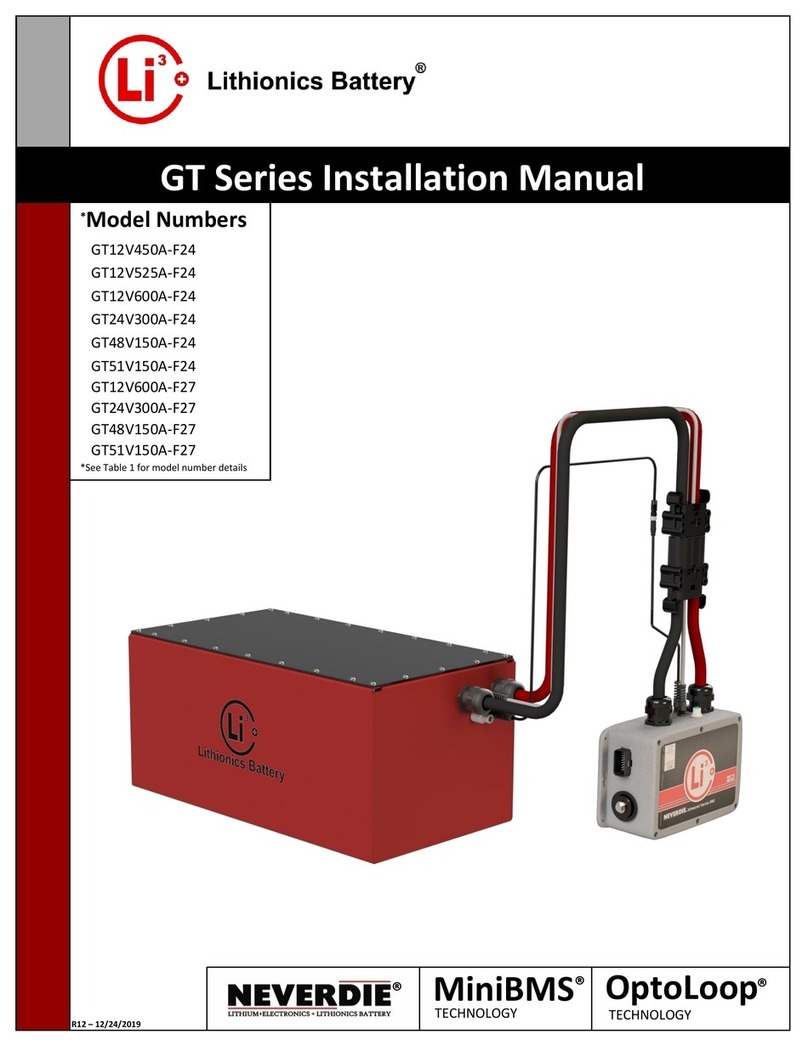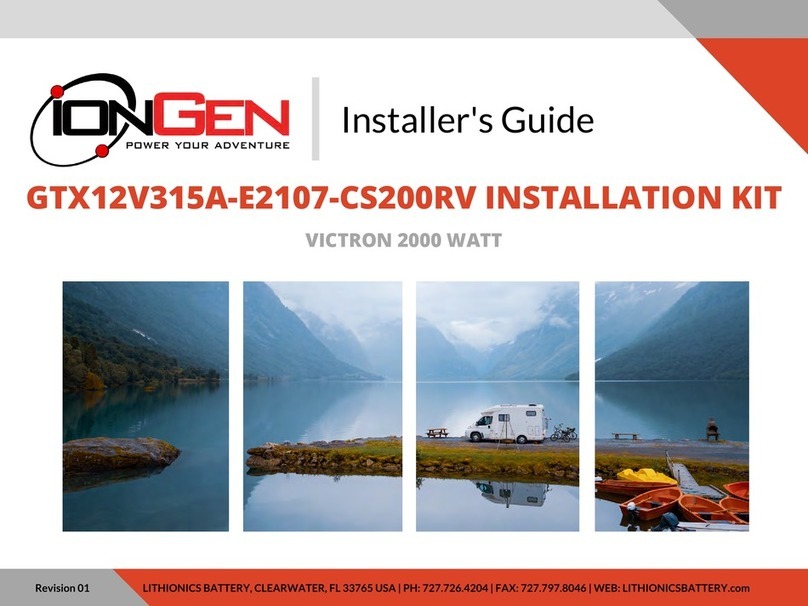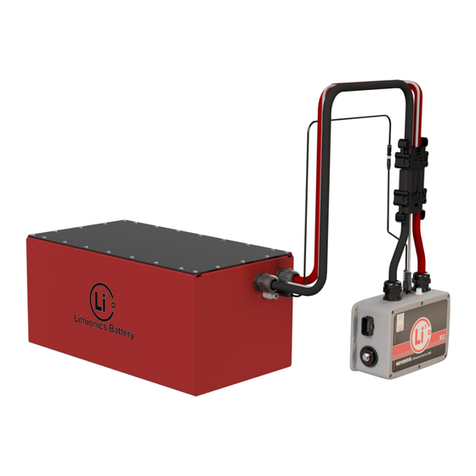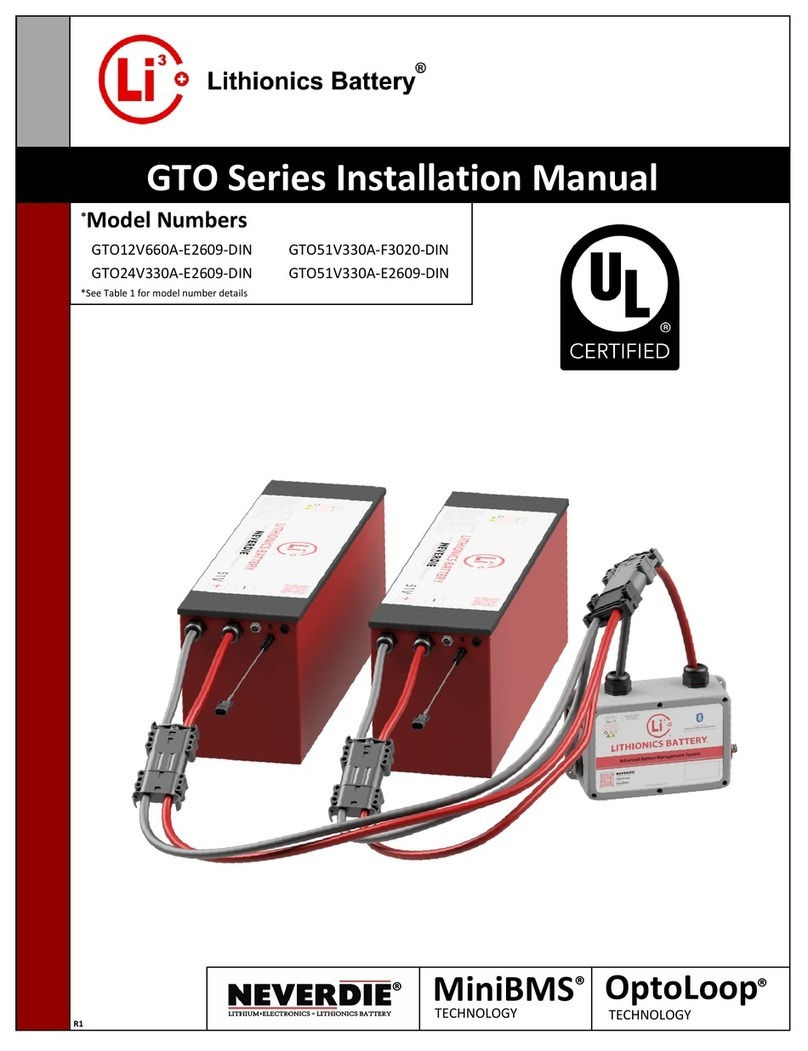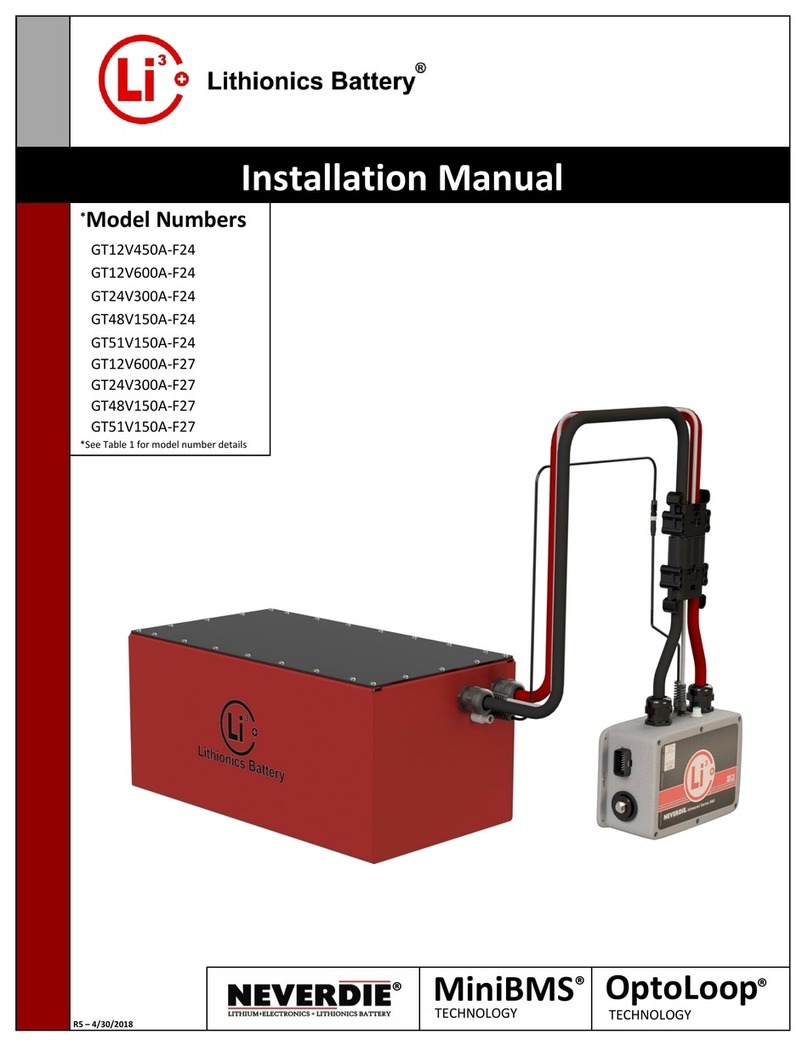LITHIONICS BATTERY, 1770 CALUMET ST, CLEARWATER, FL 33765 USA
PH: 727.726.4204 | FAX: 727.797.8046 | WEB: LITHIONICSBATTERY.COM
Page 4of 11
First Power-up
The battery needs to be fully charged to 14.4V to condition the battery for use. Fully charging the battery calibrates the state-of-charge
percentage to be the most accurate and allows the cells to balance if necessary. The battery should be fully charged to 14.4V at least
once every 2 weeks.
Operation
Before powering on, ensure the battery terminals are insulated and any connected devices are properly fused.
Due to shipping laws and regulations, your battery may be received at a partial state-of-charge (typically 50%). The battery needs to
be fully charged before use. This is necessary to calibrate the state-of-charge meter.
Powering the Battery On The power button is located on the battery lid and/or on the remote accessory harness extension. To turn
the battery on, press the power button for one second. The power button status light will illuminate solid on to confirm the battery is
powered on and operating normally.
Powering the Battery Off Be sure to shut down any high amperage loads prior to turning the battery off. To turn the battery off,
press and hold the power button for 3 seconds. The power button status light will turn off to confirm that battery power is off.
Resetting Power after a Protection Event If the battery detects a fault then it may turn power off. The battery can then be reset by
pressing the power button for one second.
Discharging Discharging may be performed at any time the system is powered On. The NeverDie® feature allows the system to
have a “reserve” amount of energy left in the battery. Once the system is discharged to approximately 12.0V or 10% state-of-charge,
whichever comes first, power will be off to leave a “reserve” amount of energy still left in the battery. The battery will also disconnect
power if the voltage, amperage, or temperature limits are exceeded during discharging. To enable the remaining reserve energy of
the system, press the BMS power button for 1 second. Once the reserve range is enabled the battery should be charged as soon as
possible. See page 9 BMS Functions for further details.
WARNING - If the reserve energy is used and the battery module is left in a deeply discharged state without immediate charging, the
battery module may become permanently damaged.
Charging The charging device(s) connected to the Lithium Battery System must be programmed per the recommended charge
settings below. Using an improper charger or charge settings could result in undesirable battery performance and accelerated wear.
The battery will disconnect power if the voltage, amperage, or temperature limits are exceeded during charging. Please note that
voltage rise during bulk charge stage is very slow, followed by a fast voltage rise at the end of charge. Once charge is completed, the
voltage drops down to a resting level. This behavior is normal and should not cause any concerns.
A lithium iron phosphate (described as LFP or LiFePO4) charger or
charging profile is required for battery charging. The battery
charge voltage should be set to 14.4V, equalization and
temperature compensation must be disabled, and if the charger
supports float mode, set it to 13.4 - 13.6V. If you are not sure if
your charger is suitable for charging your battery, contact
Lithionics Battery® or your dealer to confirm charger
compatibility, or to purchase compatible charger.
NOTE - Due to partial state-of-charge during storage and shipping, the cells inside the battery may not be perfectly balanced during
the first few charge cycles. You may observe some high voltage alerts and cell balancing status codes on the Lithionics Battery® Monitor
app, which indicate the balancing process is in progress. This is perfectly normal behavior and should not cause any concerns. After a
few full charge cycles the cells will balance out and these alerts will disappear. There is no adverse effect on battery operation, you
may continue to use the battery normally during these initial charge cycles.
